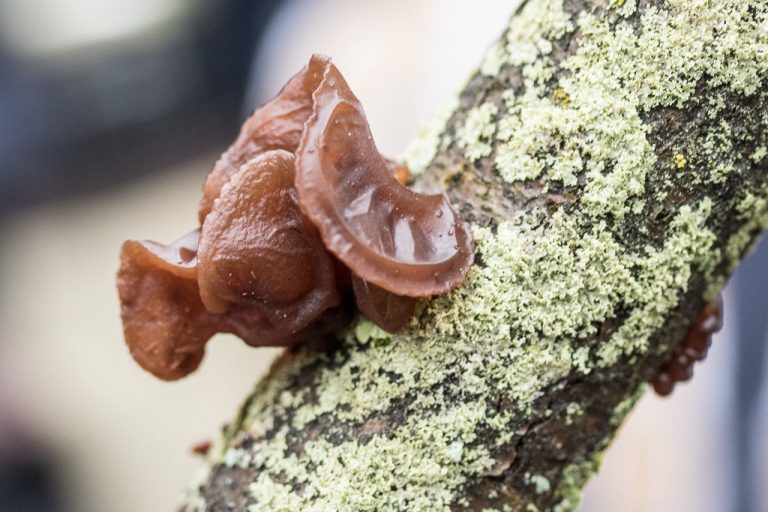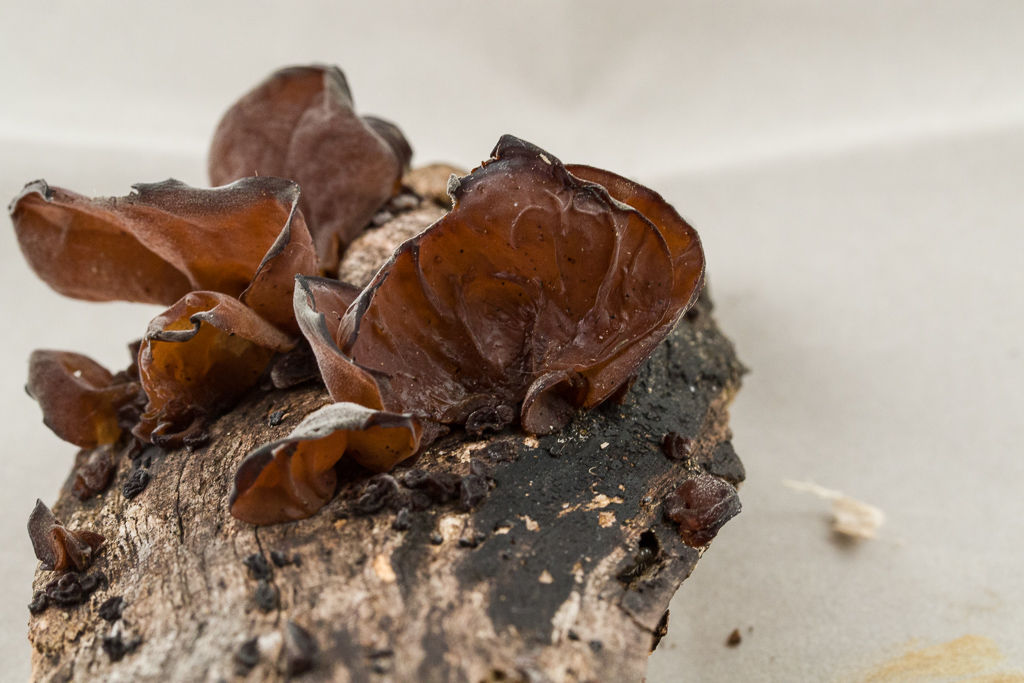
Īs well as the obligate synonyms from Bulliard, Fries and Berkeley, there are numerous other synonymous names. Despite this, Auricularia auricula-judae is the currently recognised name for the species by many sources, though Auricularia auricula is still occasionally used. Though critical of Lucien Marcus Underwood, saying he "would probably not have known the Jew's ear from the calves' liver", he followed him in using Auricularia auricula, which was in turn used by Bernard Lowy in an article on the entire genus. The name was criticised by mycologist Curtis Gates Lloyd, who said "Auricularia auricula-Judae is cumbersome and in addition is a slander on the Jews".

Under binomial nomenclature, a species name can comprise only two words but the taxonomists responsible for this naming hyphenated the specific name to "bend the rules" and keep the name "within the letter of the law". auricula-judae comprises auricula, the Latin word meaning ear, and Judae, meaning of Judas. The species was given the name Auricularia auricula-judae in 1888 by Joseph Schröter. In 1860, Miles Joseph Berkeley described the species as a member of Hirneola, a genus described by Fries in 1848, now considered synonymous with Auricularia. In 1822, Elias Magnus Fries transferred the species to Exidia, and, in so doing, sanctioned the name. In 1791, Bulliard transferred the species to the genus Peziza. Tremella auricula-judae is now considered a basionym. However, the genus Tremella is now reserved for fungal species that live as parasites on other fungi. The species was first mentioned in the scientific literature as Tremella auricula by Carl Linnaeus in his 1753 Species Plantarum, and later (1789) described by Jean Baptiste François Pierre Bulliard as Tremella auricula-judae. The mistranslation "Jew's Ear" appeared in English by 1544. French oreille de Judas, German Judasohr). The medieval Latin name auricula Judae (Judas's Ear) matches the vernacular name in most European languages (c.f. It is from the belief Judas Iscariot hanged himself on an elder tree that both the specific name auricula-judae and the common name Jew's ear originate. Judas se pend ( Judas Hangs Himself), by James Tissot. auricula-judae has antitumour, hypoglycemic, anticoagulant and cholesterol-lowering properties. Modern research into possible medical applications has variously concluded that A. It is also used in Ghana, as a blood tonic. Today, the fungus is a popular ingredient in many Chinese dishes, such as hot and sour soup, and also used in Chinese medicine. Although it is not widely consumed in the West, it has long been popular in China, to the extent that Australia exported large volumes to China in the early twentieth century. auricula-judae was used in folk medicine as recently as the 19th century for complaints including sore throats, sore eyes and jaundice, and as an astringent. The fungus can be found throughout the year in temperate regions worldwide, where it grows upon both dead and living wood. Today, "wood ear", "jelly ear", "tree ear", and other names are sometimes used.

Its specific epithet is derived from the belief that Judas Iscariot hanged himself from an elder tree the common name "Judas's ear" was largely eclipsed by the corruption "Jew's ear". The fruiting body is distinguished by its noticeably ear-like shape and brown colouration it grows upon wood, especially elder.

Auricularia auricula-judae, known most commonly as wood ear or black wood ear (alternatively, black fungus, jelly ear, tree ear, or by a number of other common names), is a species of edible Auriculariales fungus found worldwide.


 0 kommentar(er)
0 kommentar(er)
